AI-Driven UI/UX: Revolutionizing User Experiences with Intelligent Design
Remember the frustration of navigating a clunky website, struggling with confusing offers, or feeling ignored by using a chat box? Those days are gone. We are witnessing the dawn of a new technology era in UI/UX design that is powered by the magic of artificial intelligence (AI). Imagine interfaces that take into account your wishes, chatbots that speak like an empathic friend, and websites that seamlessly adapt to your specific preferences – this is the reality that AI weaves into the virtual fabric.
But this is not just technological fiction. A great 83% of global layout or design specialists recognized as true with artificial intelligence will significantly affect their paintings in the next five years, according to Adobe's most recent survey. Additionally, 62% of clients say artificial intelligence (AI) will improve their app user experience and create net demand for this transforming technology.
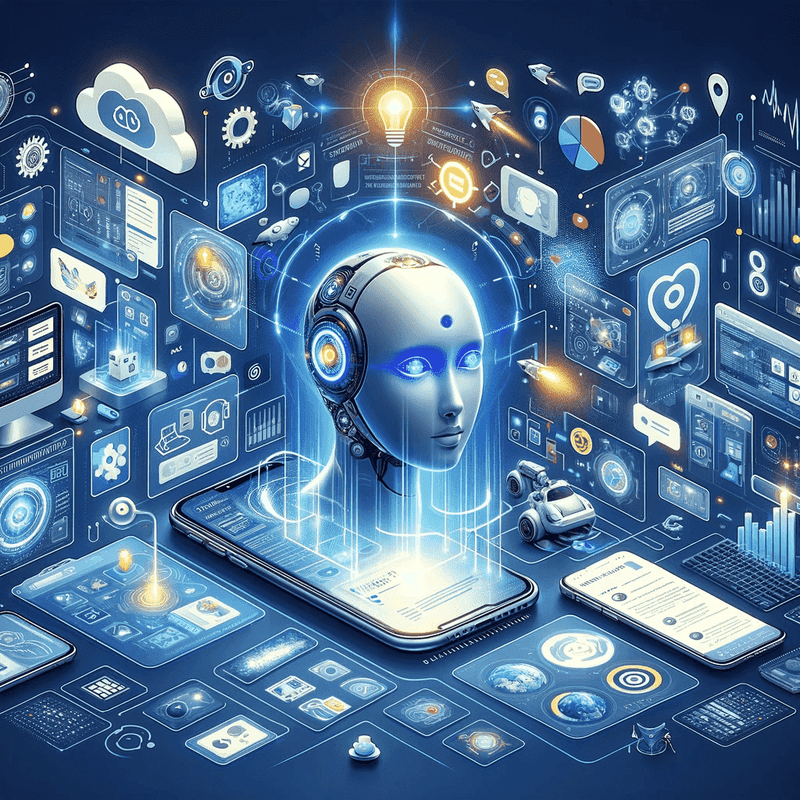
This is not just a trend; it's a revolution. It's a shift from static studies of one-piece suits all to personalized, intuitive interactions that almost uncannily follow your dreams. So, buckle up because we're about to embark on a journey into the exciting international of AI-based UI/UX design, an international era where the AI knows you better than you realize.
Benefits of AI for UI/UX Design: A Symphony of User Delight
Integrating AI into UI/UX design is not just a technological innovation; it's a powerful orchestra conducting a symphony of benefits that elevates user reviews to a whole new level. Let's dive into the important advantages that AI offers:
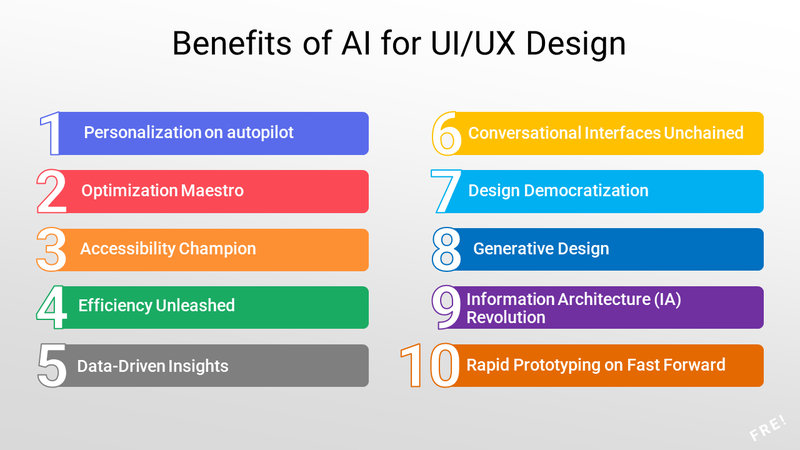
Personalization on autopilot:
Imagine a website that turns into your personal digital assistant, tracking your needs before you even specify them. AI makes it a reality. By studying users' records and behavior, AI algorithms can go beyond the virtual design of content or goods. They can proactively provide assistance, resolve questions, and perform duties entirely according to your persona's context and preferences.
Example: Amazon's Alexa uses AI to take over your desires based entirely on your interactions, allowing you to control smart home devices, order groceries, or even get personalized information updates—all wireless or finger touch.
Optimization Maestro:
Forget A/B check-out and unlimited iterations. AI acts as your optimization maestro, analyzing huge amounts of user input with staggering speed and accuracy. It can be aware of usability issues, anticipate app user behavior, and even adjust layouts and interactions in real time to maximize engagement and conversion. It's like having an invisible group of UX experts constantly fine-tuning the quality of your design for optimal efficiency.
Case Study: Airbnb uses AI to customize search results and pointers based on consumer preferences, persona, and travel history. This led to a 30% increase in booking conversions and a 40% increase in consumer pride or user satisfaction.
Accessibility Champion:
AI isn't all about bells and whistles; can be a powerful tool for inclusivity, breaking down barriers, and expanding access to the virtual world for everyone. The AI-powered device can automatically generate alt text for images, translate content into various languages in real time, or even adapt the interface for users with disabilities to ensure seamless and inclusive enjoyment for all.
Data Point: The World Health Organization estimates that 1.3 billion human beings worldwide remain with some form of disability. AI-based accessibility features can enable them to fully engage in the digital world.
Efficiency Unleashed:
Boring & Repetitive tasks such as accessing facts, moderating content, or even simple layout factors can be automated with AI, freeing up valuable time for designers to realize strategic and creative factors in their work. This translates into increased performance, faster turnaround times, and extra progressive design solutions.
Fact: McKinsey Global Institute found that artificial intelligence can automate up to 45% of the repetitive tasks currently performed by designers, freeing up their time for strategic and creative tasks. This can lead to a 15% increase in layout throughout.
Data-Driven Insights:
Stop guessing what consumers need and start learning the reality. Artificial intelligence (AI) provides designers with a treasure trove of information about people's behavior, choices, and pain factors. It goes beyond basic analytics, relaying detailed details about a user's journeys, emotional responses, and even subconscious decision-making patterns. Armed with this know-how, designers can create studies that are not only usable but emotionally resonant and truly user-centered.
Quote: "Data is the new oil. But the engine that turns it into gold is artificial intelligence (AI), and the real treasure lies in the insights we know well." – Peter Sondergaard, Chief Technology Officer, HP.
Conversational Interfaces Unchained:
AI-powered chatbots are no longer clunky, scripted interactions. They develop into intelligent natural language processing (NLP) experts who can understand complicated queries, conduct conversations with subtle nuances, and even tailor their style and tone to individual users. This opens up a new sphere of possibilities for customer support, product assistance, and personalized user assistance.
Case in point: Sephora's AI-powered chatbot allows clients to invite product questions, book appointments, or even get personalized beauty recommendations, a major 15% boost in consumer satisfaction.
Design Democratization:
AI-powered layout tools simplify the layout process and make it accessible to novices and non-designers alike. This AI tool can robotically generate layout recommendations, create color palettes, or even design factors based entirely on pre-described parameters. This allows people and small businesses to create professional-looking designs without extensive layout expertise.
Fact: Canva, a popular design platform, uses AI to offer users intelligent pointers to fonts, layouts, and images, making it less difficult for everyone to create beautiful and compelling visuals.
Generative Design:
Say Goodbye to Creative Blockages! Generative design, a relatively new method, gives designers the magic of converting textual content into an image using artificial intelligence and design concepts. Imagine describing your ideal website design layout or app interface and AI-inspiring specific usable layout options in seconds. This opens the door to new sparks ideas and allows designers to explore different opportunities that they would not otherwise consider.
Example: Adobe's "Generative Design" tool allows users to input design parameters and preferences, and AI generates more than one unique format and style option, accelerating research and new release techniques.
Information Architecture (IA) Revolution
Information architecture, the art of organizing content for world-class usability, is getting a lift with AI. Advanced AI methods can analyze vast amounts of user data and content material, detect patterns, and design visually stunning, easy-to-use, and logically powerful informational architectures. This ensures that customers intuitively discover what they want, getting an uninterrupted and frustration-free experience.
Case Study: Pinterest uses AI to customize the listing structure for individual customers based on their search and stalking records. This resulted in a 25% increase in consumer engagement time and a 10% increase in conversion fees.
Rapid Prototyping on Fast Forward:
Time is precious for designers. To the rescue, come AI-powered prototyping tools that accelerate the system by providing layout pointers and ideas primarily based on pre-defined person parameters and data. Designers can quickly experiment with distinctive layouts, interactions, and patterns, saving valuable time and reducing costs without compromising on the uniqueness of the prototypes.
Fact: Designers spend 30% less time using AI-powered prototyping tools a study conducted by InVision
Real-World Examples of AI in UI/UX: Where Imagination Meets Innovation
The impact of AI on UI/UX layout is not always just theoretical; is already transforming the experience of users across industries around the globe. Let's dive into some breathtaking examples that show the real power of AI in motion:
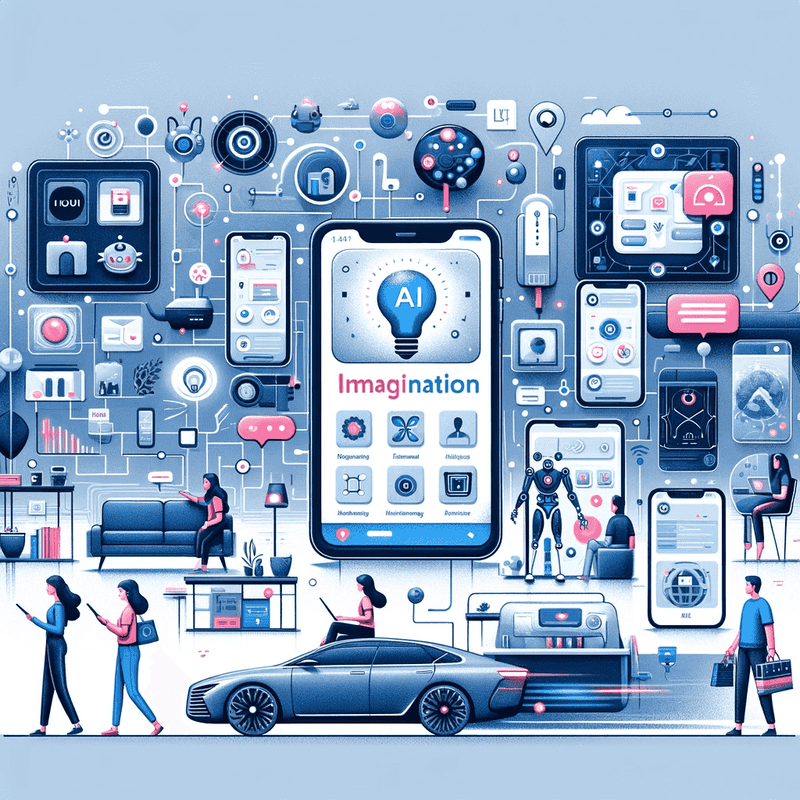
E-commerce personalization:
Imagine a shopping experience that's like having a behind-the-scenes stylist. Zalando, the leading European-style e-commerce platform, uses artificial intelligence (AI) to tailor product designs, anticipate personal selections, or even promote complementary items primarily based on past purchases and surfing behavior. This resulted in a fifteen percent increase in regular order value and a 20% increase in customer satisfaction.
AI-powered chatbots
Gone are the days of robotic, scripted interactions. AI-powered chatbots like Sephora's Beauty Assistant can solve complex questions, recommend personalized products, and even schedule appointments all with natural language conversations. This isn't the smartest customer support add-on, but it does free up human representatives for extra complex queries.
Voice-controlled interfaces:
The upward push of smart speakers like Amazon Echo and Google Home has popularized voice-controlled interfaces. Netflix uses AI to recognize voice instructions in natural language, allowing customers to search for their favorite movies and shows without touching anything. Thanks to this voice-based interaction, the user experience is extremely intuitive and accessible, especially for the visually impaired.
Accessibility innovations:
AI breaks down barriers for users with disabilities. Microsoft's Seeing AI uses AI photo recognition to connect the environment for visually impaired customers, while Apple's VoiceOver uses AI to convert text to speech, making websites and apps accessible to visually impaired users. These enhancements sell inclusivity and allow anyone to engage in the digital international environment.
Dynamic content optimization:
Websites are now not static entities. Spotify uses AI to personalize search results and playlists entirely based on individual user choices and listening habits. This dynamic content optimization is no longer the most effective, keeping users engaged, but also exposing them to new tunes to enjoy, especially the five percent increase in personal enjoyment.
A/B testing on steroids:
Optimizing website layouts and elements can be time-consuming. Optimizely, a leading experimentation platform uses artificial intelligence (AI) to test with multiple variables. This enables the simultaneous trial of endless versions, identifying the most chosen combination with remarkable speed and accuracy, speeding up the optimization process, and ensuring a satisfactory feasible consumer experience.
Design automation for efficiency:
Repetitive design tasks like image resizing and creation of color palettes are automated with AI. Canva, a famous design platform, uses AI to offer customers intelligent pointers to fonts, layouts, and images, making layout creation faster and more efficient, especially for non-designers.
Immersive experiences with AR/VR:
Augmented Reality (AR) and Virtual Truth (VR) are revolutionizing people's stories or user’s experience. The IKEA Place app uses Augmented Reality (AR) to fully place furniture in customers' homes, allowing them to visualize how it might look before they buy, while Google Lens uses AI to select gadgets and landmarks via a smartphone's digital camera, providing relevant information and real-time translations. These AI-powered immersive messages embellish user engagement and offer valuable software.
Ethical Considerations of AI in UI/UX: Navigating the Moral Maze
While the benefits of using AI for UI/UX design are undeniable, adding it into the mix raises some ethical questions we've got to think about seriously. We need to tread this tech path with a lot of care, making sure AI is helping us out and making our online experiences better, not worse. Let's dive into some of the major ethical points we need to keep in mind:
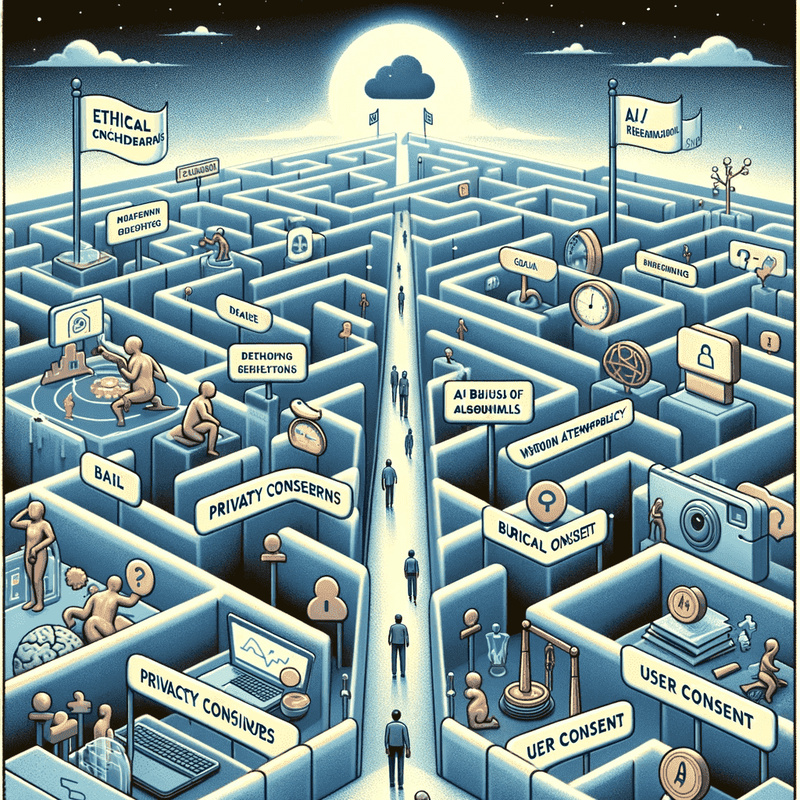
Bias and Fairness:
AI learns from data, and sometimes, this data isn't exactly fair, leading to biased results in UI/UX design that could end up favoring some folks over others. Like, imagine an AI that suggests jobs ends up being skewed towards recommending certain types of jobs more to one gender or ethnic group. Designers have to be super careful to spot and fix these biases in their AI tools and the data they feed into them, making sure everyone gets a fair shake and an inclusive experience.
Transparency and Explain ability:
AI sometimes works like a mystery box, where it's hard to see how it makes its choices. This gets tricky, especially when it touches on sensitive stuff like keeping user info safe or making choices about money. Designers really need to aim for transparency in their AI-driven designs, breaking down how the AI does its thing and making sure users can get the gist of its decisions
Privacy and Security:
Artificial intelligence relies on the collection and study of personal records, raising privacy and security concerns. Designers should ensure that personal data is collected ethically, stored securely, and used responsibly. Users must have clear control over their data and understand how miles are used.
Algorithmic Manipulation:
Artificial intelligence (AI) can be used to control user behavior, possibly influencing the selection of dangerous methods. For example, AI-powered chatbots can use persuasive techniques to encourage excessive spending. Designers must counter manipulatively practice and ensure that AI is used ethically and responsibly, respecting consumer autonomy and free will.
Job Displacement:
The whole automation thing with AI could shake up the job scene for UX designers, sparking worries about jobs disappearing. Sure, AI can make some tasks quicker and smoother, but it's not here to take over the unique spark and smart thinking humans bring to the table. Designers should get on board with beefing up their skills to vibe with AI, leaning into the strategic side of things, really getting how users feel, and thinking deeply about what's right and wrong. This way, they can make sure they're not just keeping up but also adding something special that AI can't replicate.
The Future of AI and UI/UX Design: A Glimpse into Tomorrow
The fate of AI and UI/UX layout is brimming with exciting possibilities that promise to revolutionize the way we interact with the digital world. Let's look into the crystal ball and explore some of the disruptive innovations that may be on the horizon:
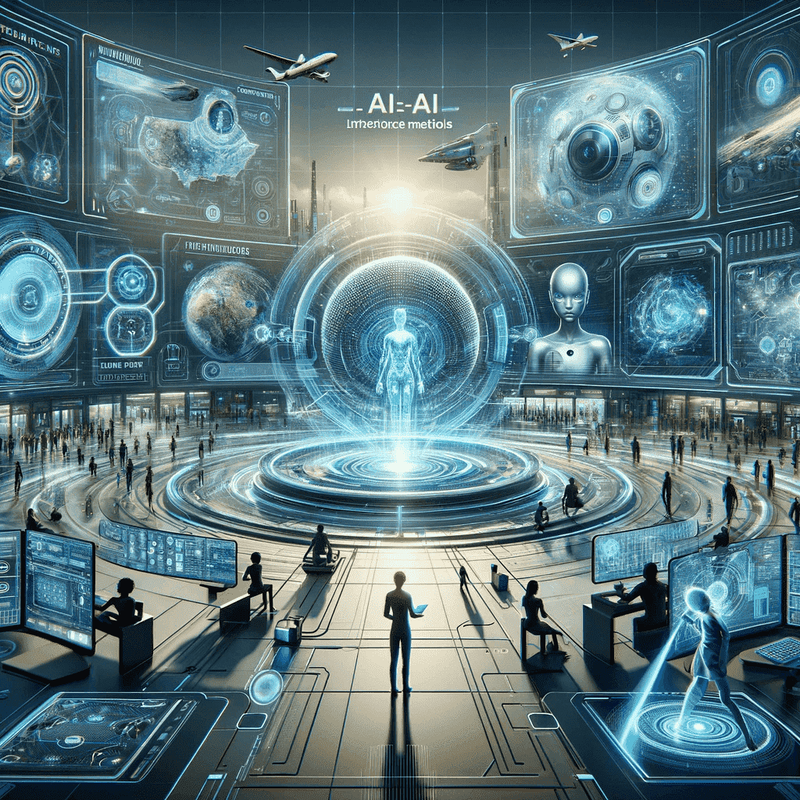
Emotionally intelligent interfaces:
Imagine interfaces that no longer just capture your desires, but also respond to your emotions. AI advances in sentiment rating and emotion recognition will pave the way for interfaces that adapt their tone, fashion, and capabilities or functionality based on your emotional terrain. The result should be more empathetic and tailored that cater to your personal desires and capabilities.
Example: Imagine a virtual assistant that detects your frustration at a certain point in a technical problem and mechanically switches to a relaxing and supportive tone, offering solutions tailored to your emotional state.
Seamless Multimodal Interaction:
Looking ahead, we're moving towards a world where we won't always be stuck to screens to interact with our digital stuff. AI's going to unlock the door to chatting with our gadgets through voice, waving our hands, or even just thinking about what we want to do. Picture turning on the lights in your house with a quick thought or diving into virtual places by just moving your hands around. This mix of ways to interact is going to make using tech feel more natural and pull us deeper into the experience.
Case Study: Microsoft's HoloLens 2 uses artificial intelligence to allow customers to interact with holographic projections in real time, blurring the lines between the physical and digital worlds.
AI-powered Design Collaboration:
Design teams will be augmented with artificial intelligence (AI) assistants who provide real-time notes, generate multiple design versions, and even co-create elements based on consumer data and design ideologies. This collaborative technique accelerates the design process, democratizes layout, and unleashes new ranges of creativity.
Fact: Adobe's latest insight found that 75% of designers believe AI will become a central member of their design teams within the next 5 years.
Hyper-Personalized Experiences:
Artificial intelligence (AI) takes personalization to a whole new level, creating experiences as specific as the user’s fingerprints. By studying vast amounts of information and consumer behavior, AI dynamically adapts interfaces, content, and interactions to the capabilities, wishes, or even subconscious desires of each user. This level of personalization will blur the line between digital products and private partners.
Data Point: Gartner predicts that by 2025, 80% of digital experiences may be personalized, driven by artificial intelligence and machine learning.
The Rise of Explainable AI:
As artificial intelligence (AI) becomes more complicated, the need for transparency and explainability becomes paramount. Designers will use explainable AI (XAI) strategies to make AI decision-making approaches understandable to both users and themselves. This transparency will build trust and ensure that AI is used ethically and responsibly in the UI/UX layout.
Quote: "The destiny of artificial intelligence is not about replacing humans, but about empowering them to do something extra." - Andrew Ng, co-founder of Landing AI and Coursera.
Remember: The fate of AI and UI/UX layout is full of possibilities, each interesting and challenging. By responsibly embracing innovation and addressing ethical concerns, we will create a digital destiny in which artificial intelligence empowers human creativity, empathy, and connection, shaping a more human-centered and inclusive world.
Conclusion: Embracing the AI-Powered Future of UI/UX Design
As we complete this journey into the captivating world of AI-based UI/UX design, let's recap the important takeaways:
Artificial intelligence (AI) is no longer a fiction of technological know-how, it is a transformative force shaping the future of user experience. From personalization on autopilot to real-time interface optimization, AI provides designers and users with a wealth of benefits.
Real-world examples show the tangible impact of AI in various industries. From chatbots that recognize your desires, to voice-controlled interfaces and dynamic content optimization, artificial intelligence is already growing with extremely intuitive, attractive, and accessible reviews.
Ethical questions demand our attention. Bias, transparency, privacy, and manipulation are critical issues that should be addressed responsibly to ensure that AI serves humanity and promotes inclusivity.
The future holds exciting opportunities with emotionally smart interfaces, seamless multimodal interactions, AI-powered design collaboration, and hyper-personalized user experiences. However, this destiny must be built on trust and ethical improvement.
DECODERMIND YOUR TECH PARTNER:
Ready to harness the power of AI to create user reviews of the next technology?
Contact Decodermind, the amazing software development company in town! We focus on creating cutting-edge UI/UX designs infused with the power of AI. Our team of professionals will help you unlock the full potential of this transformative technology and give experiences that will not only delight your customers but also drive business success.
Why choose Decodermind?
- Proven track record: We have extensive experience in cultivating revolutionary and user-friendly packages across multiple industries.
- Expert Team: Our team consists of professional designers, builders, and AI professionals who are passionate about pushing the boundaries of these new technologies
- Focus on Innovation: We stay at the forefront of cutting-edge AI and UI/UX design advances, ensuring your answers are future-proof.
- Collaborative method: Throughout the development technique, we carefully paint with you to ensure that your vision comes to life.
Don't wait, contact Decodermind today and let them embark on your AI/UX adventure together!

 Hamid Salman
Hamid Salman